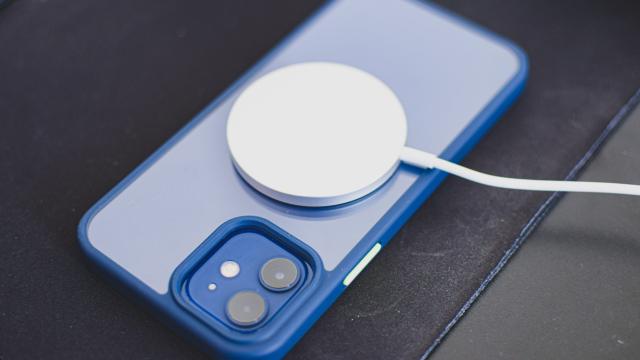As cool and convenient as wireless charging can be, boy is it slow. We’ve talked about how inefficient wireless charging is, especially compared to traditional wired charging. However, the technology has made huge leaps in recent years; some smartphones can wirelessly charge up to 100% in under an hour. You can only take advantage of these speeds if your set up is right, though.
Your smartphone has to support fast wireless charging
Your smartphone doesn’t only have to support wireless charging; it also has to support fast wireless charging, and there are different maximums smartphones can support. For the first three years Apple supported wireless charging on iPhone, the maximum remained at 7.5W. Starting with the iPhone 12 line, however, the maximum is now 15W, in line with many Android phones on the market.
That is far from the fastest wireless charging specs you can find, though. The OnePlus 8 Pro supports up to 30W wireless charging, while the OnePlus 9 Pro supports up to 50W wireless charging. Imagine going from wirelessly charging an iPhone 11 to a OnePlus 9 Pro; could the speeds make up for your iPhone friends complaining about your green text bubbles?
In summary, check your smartphone’s specs to see what their maximum fast wireless charging support is. That number will help determine your next step.
The wireless charger is as important as the smartphone
It’s not only the phone’s maximum which matters here; without the proper wireless charger, you won’t live up to these full speed potentials. Apple’s MagSafe charger, for example, supports up to 15W wireless charging, but this Yootech wireless charger only supports up to 10W. That works great for phones with a 10W wireless charging maximum, but for the iPhone 12 and later, or any Galaxy phone made in the last six years, you won’t be charging as fast as possible.
OnePlus is another example; those 30W and 50W wireless charging maximums are only possible with the right chargers. OnePlus sells 30W and 50W wireless chargers to do just that; the point, however, is a phone which supports super fast wireless charging on a low-speed charger will charge as slowly as any other phone. Make sure you have the right one for your device.
When shopping around, you’ll likely see wireless chargers advertised as 7.5W for all iPhones. That’s outdated information from those three years of iPhones we discussed above. If the wireless charger can handle 15W, but is advertised for 7.5W for iPhone, your iPhone 12 or newer should be able to take advantage of that 15W with ease.
Don’t forget about the power adaptor
After learning about your phone’s maximum fast charging wattage, and going out and buying a wireless charger which matches this wattage, it would be such a shame to ruin everything by plugging it into the wrong power adaptor. The brick you plug your wireless charging into is an equally important piece of this puzzle. Without it, you won’t be able to reach your top speeds.
Let’s go back to Apple’s MagSafe example; Apple’s wireless charger does indeed offer up to 15W of wireless charging. However, this promise is only powered by the recommended 20W power adaptor. It doesn’t have to be Apple’s power adaptor, per se, but it does need to be 20W. Any less, and the MagSafe charger won’t be able to push the full speeds as advertised.
You’ll need to check the specs of your wireless charger to make sure your power adaptor is enough to support fast wireless charging. Don’t be fooled by a weaker power adaptor which successfully powers the wireless charger; you will only achieve the wireless charging speeds you want if you have the right power adaptor.
As explained in our guide here, you’re usually better off overdoing it with the power adaptor rather than going too weak. The wireless charger will only take in as much current as its designed to, so you can’t overload the charger or the phone with power. Happy charging.

Leave a Reply
You must be logged in to post a comment.